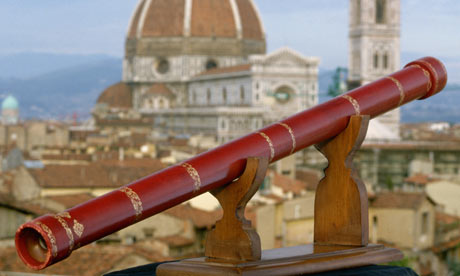
THE INVENTION
OF THE TELESCOPE.
NEARLY three hundred years ago there lived in the town of Middleburg, on the island of Walcheren, in the Netherlands, a poor optician, named Hans Lippershiem. One day in the year 1608, he was working in his shop, while his children amused themselves with the tools and other things lying on his bench. Suddenly his little girl exclaimed, "O papa! See how near the steeple comes."
This announcement partially startled the honest Hans, who looked up from his work, curious to know what had caused the child's amazement.
Turning in the direction where she stood, he saw her looking through two lenses, one close to her eye, the other held at arm's length. He called the child to him, and saw that the eye lenses was flat on one side and hollowed out on the other, while the one held at a distance was flat on one side and bulging on the other. By repeating the experiment, he soon discovered that she had chanced to hold the lenses at the exact focus to produce the wonderful effect, which she had observed.
Hans's ready wit and inventive genius soon led him to make use of his newly found knowledge of lenses. Having fashioned a paste-hoard tube in which to set the glasses firmly at their exact focus, he held in his hand the germ of that wonderful instrument,—the telescope. After some more experiments, Lippershiem sent to his government three telescopes made by himself, and called by him "instruments by means of which to see to a great distance."
Thus, by mere accident, was made an important discovery, by the aid of which modern science has been enabled to solve many of the great mysteries of creation.
R. B. W.